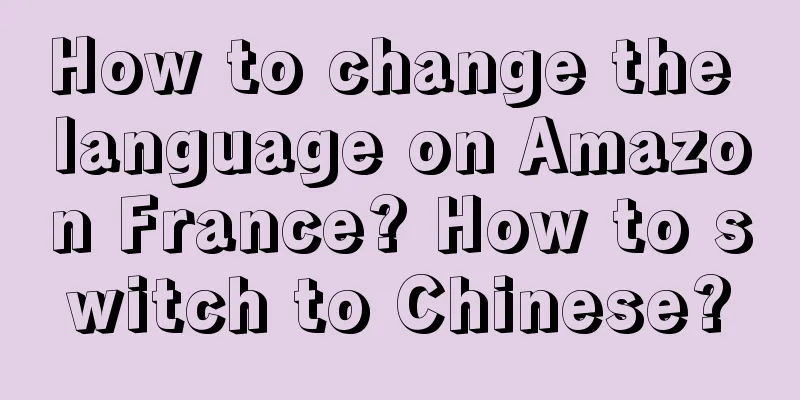Amid price war, Starbucks plans to change its way of life

When a price war breaks out in the industry, is there any brand that can really "stay out of it"? It has been nearly a year since Luckin Coffee started the 9.9 yuan price war. During this period, most coffee brands have faced the choice of "join or be out", including not only Kudi, which is "from the same root", but also Seesaw, the veteran of boutique coffee, M Stand, the new dark horse, and Tims, which have launched low-priced group purchase packages in pursuit of sales. Of course, there are also "bystanders", the most prominent of which is Starbucks, which has always publicly expressed that it will not participate in the war, but it seems that it has not been able to keep itself "out of the war." According to Starbucks' second quarter financial report for fiscal year 2024, during the reporting period, Starbucks China's same-store sales fell 11% year-on-year. However, even though the performance was not as expected, Starbucks founder Howard Schultz still firmly expressed his attitude of not joining the low-price competition when he visited China in March. However, the data is somewhat contradictory. According to Starbucks' first quarter financial report for fiscal year 2024, the average customer unit price of Chinese stores fell by 9% year-on-year during the reporting period. The attitude is not to participate in the war, but the action is to reduce prices. This "inconsistency between words and deeds" aroused our interest. To explore the reasons, we looked up a series of data, including the following two interesting charts (data cut-off date: April 24). Both of these pictures are scatter plots with the number of brand stores and average customer unit price as the horizontal and vertical axes. The left picture shows the TOP10 brands in the coffee industry, and the right picture shows the TOP10 brands in the milk tea industry. It can be seen intuitively that there is only one brand in the two pictures located in the first quadrant, with both high number of stores and high average customer spending, and that is Starbucks. The data cited in the figure was taken on April 26, which is after Starbucks' average customer spending dropped. But even in this case, compared with coffee brands with the same number of stores, Starbucks' average customer spending is still significantly higher. From this perspective, it is indeed impossible to say that it is competing with other brands in terms of price. However, this also raises new questions:
1. What do people who love Starbucks love?"Star-studded, fast-paced production, available everywhere, and I love Fu Bai too." In order to understand the allure of Starbucks, we conducted some consumer research before doing a rational analysis. The 17-word answer above comes from a student who has been drinking one cup of Starbucks a day for 9 years. Compared with this super user, other answers are much more rational. The most frequently appearing keywords are: "company reimbursement", "business negotiation", "doing homework (answer from a student)", "airport high-speed rail station". From a clustering perspective, Starbucks has two most impressive features: First, in terms of scene requirements, Starbucks is strongly associated with scenes such as business communication, work and study that have functional requirements for the environment; Second, in terms of store distribution, Starbucks can always be found where the target users need it; among them, Starbucks in transportation hubs such as airports and high-speed railways can especially leave people with unique memories. This makes people wonder, compared with Luckin Coffee, which now has more than 18,000 stores, Starbucks does not have the absolute largest number of stores, so why can it give people the feeling of "being everywhere"? How does it shape brand memory through scenes? With the above two clues, let us briefly review the development process of Starbucks entering China. When talking about Starbucks, "third space" is a word that cannot be avoided. Howard Schultz has always regarded this as an important reason for Starbucks' success. Before the emergence of Starbucks, although the United States had a mature coffee drinking habit, before the 1980s, coffee was mostly sold with meals in the United States, and there were few large-scale chain coffee shop brands until the emergence of Starbucks. With comfortable space experience, standardized dark roasted Italian coffee, warm service and affordable prices, Starbucks has become the top coffee chain brand in the US in terms of market share in just a few years. Among them, standardized products, store space design and consumer experience are the most attractive points of Starbucks. But Starbucks' strategy for entering China is different. In the 1990s, many Western catering brands entered China one after another. The well-known Haagen-Dazs, McDonald's and Pizza Hut entered China in 1996, 1990 and 1990 respectively. They introduced Western food such as ice cream, fried chicken and French fries, pizza, etc. into China, and used high prices to shape themselves into high-end brands, existing in people's lives as "luxury goods". Starbucks is similar, except that it brings coffee. In 1999, Starbucks opened its first coffee shop in Beijing World Trade Center. For the people at that time, Starbucks, with the halo of a world-renowned brand and a strong third space, sold not only coffee, but also the charm of a different Western lifestyle. Although this "charm" cannot be measured, it can be embodied in price. We made a statistical comparison between the price of Starbucks products and residents' income in China and the United States in 2001. The results showed that the price of a cup of Starbucks latte in China in 2001 was equal to 101% of the average daily disposable income of urban residents in that year, while in the United States it was only 3.09%. Obviously, Starbucks was not a luxury that the Chinese people could afford at that time. The high price directly shows how Starbucks selects its customers. The functional demand for coffee is related to mental boost, so business people who work intensively and have strong spending power became the first choice. At the same time, customers who have consumed or seen Starbucks abroad are also their target. Therefore, in order to meet them, Starbucks has focused on office buildings, core business districts, airports and other places where they appear most frequently in high-tier cities. This sounds no different from most brands, so why can Starbucks leave memories of some special scenes? By comparing the store distribution of several top tea and coffee chain brands, we found that their preferences for core business districts and office buildings are roughly similar, but only Starbucks has a special preference for transportation hubs . According to Jiuhai data, Starbucks stores are distributed in transportation hubs for more than 5%, and the rest are less than 1%. Luckin's transportation hub stores account for 0.64%, Manner for 0.22%, and Nayuki's Tea for 0.91%. However, the opening of a store is not enough reason to go into the store to shop. So why are people accustomed to consuming Starbucks at transportation hubs? Due to the absence of competitors, high passenger flow and high entry fees, chain brands in high-speed rail stations and airports generally price their products higher than in urban areas, but Starbucks keeps its prices the same. For example, comparing the pricing of McDonald's, Starbucks and Tims in Shanghai Hongqiao and downtown, the price of hamburgers at McDonald's Hongqiao Airport has increased by 10%-20% compared to the downtown store, and the price of meal sets has increased by about 50%; the price of Tims coffee drinks has increased by 30%-40%, and the price of hot food has increased by 10%-20%, mainly due to the official discounts on drinks at the downtown store; and the price list of Starbucks Hongqiao Airport T2 store is exactly the same as that of the Great World store. Frequent appearances in places where target users are naturally make it "everywhere". At the same time, in special scenarios with rigid demand, the consistency of brand products and pricing is maintained, giving a differentiated brand impression with "unchanged". However, Starbucks' high degree of unity in terms of price, scene creation and space experience is rare in the industry. Regardless of whether it is business communication or the selection of work and study space mentioned in the consumer survey, there are two needs behind it. One is the physical need for space and facilities; the other is the psychological trust in the stability of the brand experience. Starbucks has always had people who sit with their laptops all day. For these people, tables and chairs, WIFI, charging sockets, and a relatively quiet and friendly space environment are all essential elements. And for a place for business communication, "making no mistakes" is the most important thing. In addition to the comfort of the space, a brand that is generally recognized as "not embarrassing", a store location that is easy to navigate, and products that are easy to order are all factors that need to be considered. A netizen on Zhihu pointed out that in the high-traffic areas of Nanjing Road, Yuyuan Garden, and Huangcheng Temple in Shanghai, Beijing Road in Guangzhou, and Wuyi Huangxing Square in Changsha, it is difficult to find a second place to charge your phone except Starbucks. After all, if turnover is the most important, reducing these facilities can improve operational efficiency. In terms of physical conditions, it is not difficult for a coffee shop to achieve these. But as a brand, it is not easy to ensure that every store can meet the standards. It is precisely because of this that Starbucks has become the "no-go" choice in everyone's eyes. Schultz once defined Starbucks in his autobiography as a "company that relies on its brand to survive." Products, employees, and store experience are the most direct manifestations of the brand. To make concessions for the brand image, a strong cash flow and control system are needed, and behind it is a strategy of all stores being one chess game and strong on-the-ground management. This explains to a certain extent why Starbucks, known as the "Whampoa Military Academy of the coffee industry," can sit firmly in the first quadrant. 2. Price reduction is not "joining the war", but a proactive change to the new customer baseDoesn’t the new brand have any impact on Starbucks’ position? Obviously not. According to the Baidu Index, the most popular keyword associated with Starbucks is Luckin Coffee. And looking at the long-term axis, Starbucks' Baidu Index is showing a downward trend, while Luckin is slowly rising. The performance is even more obvious. Starbucks, which had seen sales increase for nine consecutive years, saw its first sales decline in the third quarter of fiscal 2018 , and has also frequently seen quarterly performance fall short of expectations in recent years. Obviously, newcomers in the local market have posed a threat to Starbucks. Seesaw, founded in 2012, became a pioneer in China's specialty coffee, but before Luckin Coffee came along, there were almost no coffee brands on the market that could threaten Starbucks in terms of scale. Starbucks is still the first coffee brand that most people recognize. However, the emergence of Luckin Coffee has rewritten the industry logic with Internet thinking. It has continuously raised its reputation in the coffee industry through marketing events and popular new products, and has also brought coffee to the public's attention. At this time, the first coffee that contemporary young people come into contact with may be Luckin Coffee, not Starbucks. This is also reflected in the Baidu search index of Starbucks and Luckin. Comparing the population distribution of Starbucks and Luckin, it is obvious that 30 years old is a hurdle for both. For young people who did not grow up with Starbucks, this brand is nothing special to them. But young people are always the growth point of the brand. Faced with a group of people who have no "old feelings", Starbucks can only adjust itself to adapt to them. The most obvious and most concerned point is "price" . Many media attributed Starbucks' price cut to the price war, but even if there was no price war, Starbucks would probably have to make changes when facing a group of new-age young people it has never met. At present, there is still no direct discount for ordering at Starbucks stores, and the price reduction is mainly reflected in the use of "coupons". The main channels for obtaining coupons include red envelope discounts on food delivery platforms, multiple coupons for e-commerce platform activities, and bank points redemption coupons. First, from the perspective of price and value, a large part of the reason why Starbucks' original high price comes from the rental cost of its third space, while takeout orders only get the product without enjoying the space experience, so the price reduction of takeout is a reasonable return to its value attribute. Coffee costs are not the biggest part, and takeout can bring an increase in the total sales of a single store, with little impact on profits. Secondly, compared to "selling goods", cooperating with various platforms to issue redemption coupons and selling multiple coupons on e-commerce platforms is more important for Starbucks as a traffic outlet. Facing young people who stay at home and are busy, it is much easier to meet online than in person. Moreover, although the unit price of 10 coupons at a time is reduced, it locks the consumption frequency to a certain extent, which is still a good deal. In addition, as a leading brand in the category, all major e-commerce platforms will provide traffic subsidies. Compared with the high offline rent, online traffic is more affordable. In addition, launching discounts on multiple channels is also a form of self-promotion . On Xiaohongshu, there are bloggers who publish discount guides for Starbucks in various regional platforms every week. In fact, after the price cut, Starbucks still keeps the price stable between 20-30 yuan, which is 2-3 times of 9.9 yuan. Compared with Seesaw and Tims, which have both offered group purchase specials of around 10 yuan, it is better to say that Starbucks is taking the right path at its own pace rather than participating in low-price competition. Similar logic also occurs in products and marketing campaigns. Most brands will launch their own "replicas" based on popular products, but Starbucks rarely follows suit. Just like the raw coconut latte that Luckin Coffee made popular in 2021, Starbucks has not launched it to this day. But this does not mean that Starbucks refuses to change its products according to user preferences. On the contrary, providing more local coffee innovation products has also been included in the three elements of Starbucks' China strategy. In the second quarter of fiscal year 2024, Starbucks China launched a total of 27 new products, an increase of about 100% month-on-month and nearly 200% year-on-year. Many of these actions also show their attention to young groups. For example, Starbucks, which rarely launches drinks in collaboration with brands, has launched new products in collaboration with "The Monkey King" and QQ since the beginning of this year. According to the "2023 Mobile Traffic White Paper" by Youmiyoushu, among QQ users in 2023, the largest age group is under 25 years old, followed by 26-35 years old, and the two together account for more than 60%. In addition to tapping into new customer groups vertically, Starbucks is also working hard to expand its market horizontally. 3. As Starbucks continues to decline, is it still far from being “affordable”?Regarding the direction of development, Starbucks China Chairman and CEO Wang Jingying has clearly stated that the company will accelerate its expansion into more county-level markets. This isn't the first time Starbucks has fallen. As early as 12 years ago at the 2012 Boao Forum for Asia Annual Conference, John Culver, then President of Starbucks China and Asia Pacific, said that Starbucks planned to operate 1,500 stores in more than 70 cities in China by 2015, and regarded entering second- and third-tier cities as the most feasible way to expand. The difference is that today's sinking will no longer be second- and third-tier cities, but county towns, but the logic behind it is the same. In addition to the expansion of the overall scale of the coffee industry, the saturation of high-tier cities and the opportunities in low-tier cities, Starbucks has its own unique to B advantages in entering new markets. When communicating with the project staff of a commercial complex in Yantai at the end of 2022, they mentioned that in the public brand investment survey, Starbucks ranked second. Since there was no Starbucks in the administrative district where the project was located, after they signed the contract, many people in the radiation area said that they finally didn’t have to cross the district to drink Starbucks. As China is a vast country with abundant resources and is still developing, there is a big gap in consumer perceptions between different cities. Even though first-tier cities have already lost their charm for Starbucks, lower-tier cities still yearn for Starbucks. The strong demand from consumers will naturally be passed on to the real estate sector. A colleague from the commercial real estate consulting department of Zhengzhou Ruiyi De revealed that Starbucks still exists in many commercial projects like a small anchor store, obtaining a relatively good external location on the first floor of the shopping mall in the form of a long lease and low rent. Of course, Starbucks is not completely unaffected. In 2018, Luckin Coffee publicly accused Starbucks of violating the Anti-Monopoly Law, pointing out that Starbucks would require exclusive clauses when leasing properties, that is, as long as Starbucks moved in, dozens of other coffee chain brands would not be allowed to move in in the same area. However, Starbucks and Luckin Coffee can be seen opening opposite each other in some shopping malls. Facing the current fierce competition, it will be difficult for Starbucks to remain strong. When the industry starts a price war, even a company like Starbucks, which has been a leader in the industry for many years, will find it difficult to escape unscathed. However, from another perspective, a Starbucks that lowers its profile may be what it should be. Howard Schultz once described the specialness of Starbucks in "Pour Your Heart Into It": We realized that our coffee shops have a deeper romantic feeling and give people an atmosphere that is as attractive as the coffee: Taste romance - Order a cup of coffee and you can enjoy the exotic atmosphere, adding a bit of romance to your ordinary life; Affordable luxury consumption - at Starbucks, for $2 a cappuccino, blue-collar workers and surgeons alike can enjoy world-class products; An oasis - Starbucks allows people to take a break from the tedious and exhausting work. Leisurely social interaction - Polls show that Starbucks is a great place to network. Unfortunately, Starbucks, which debuted in China 25 years ago, did not look like this. Now, as it declines again and again, Starbucks may be getting closer to what it should have become. Author: Li Zi WeChat public account: Knife Skills Research Institute |
>>: "My Altay" Relaxing copywriting, my class freshener
Recommend
With one hit drama a year, has Liu Yifei become the favorite of advertisers?
Successful drama marketing is inseparable from the...
How does cross-border e-commerce live streaming operate? What are the requirements for operation?
With the rise of live streaming e-commerce, cross-...
How to increase Amazon traffic when it is low? How to increase traffic?
In the process of opening a store on Amazon, you w...
The "Carrot Knife" trapped in the short video platform
This article starts with the recent explosion of p...
What does a new media operator who earns over 10,000 yuan a month with two days off a week do in a day?
As a practitioner, the author of this article will...
Why are there fewer and fewer advertising buzzwords nowadays?
Unlike in the past, emerging consumer brands can s...
How do the “former bloggers” who are flooding the social media platforms make money?
Exploring the secrets behind the phenomenon of blo...
Can I change my ID card when registering for Shopee? How does Shopee perform identity authentication?
To register on any e-commerce platform, merchants ...
Why has the "big membership system" that Mengniu, Huazhu, and Jinjiang are all building become a money-making tool in the new era?
Membership system is now implemented everywhere, w...
Where does Shouxin Easy Pay deduct money? What is Shouxin Easy Pay?
ShouxinEasy is the first third-party payment brand...
Marketing is changing, and so must the way CMOs spend money
With the full arrival of the Marketing 3.0 era, ho...
Can't spend money on Xiaohongshu? There are too few bloggers in the category to cooperate with? How to solve these two problems!
Can't spend money on Xiaohongshu? There are to...
After studying 50 business cases, we found the 2024 Xiaohongshu e-commerce business tips
As a social and e-commerce platform, Xiaohongshu h...
Why are your data review reports always criticized?
Many data analysts often encounter questions from ...
【0 to 1】New product features and operational rhythm
This article shares the experience and reflections...









